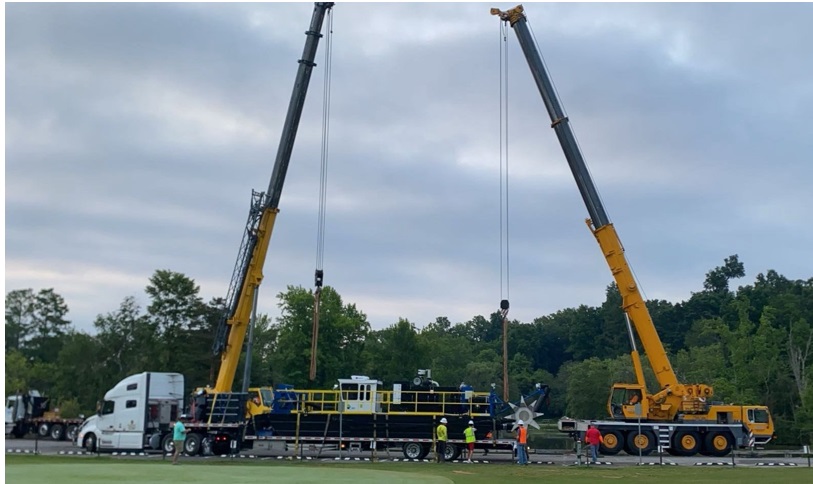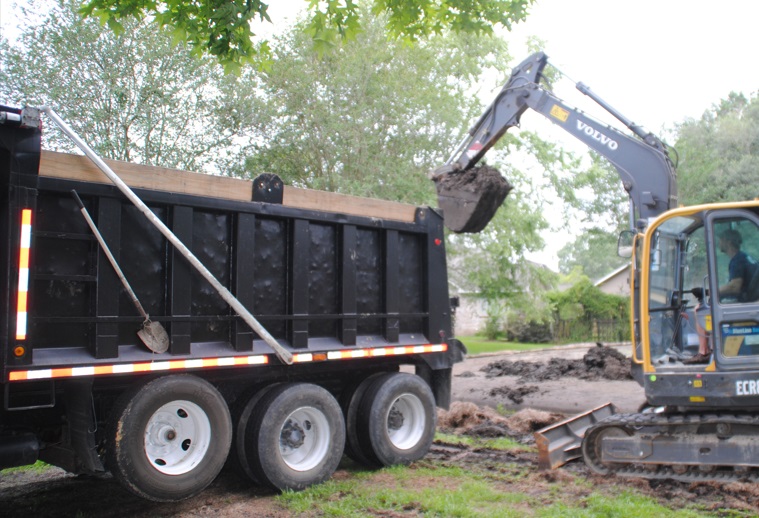What determines the cost of your project?
Developing a quote for a dredging project is not a simple process. There are several factors that affect and drive the costs that come with something so large-scale. Permitting, sediment quantity and type, and the structure of your waterway are all things that have to be taken into consideration. Here’s a rundown of some items that your unique quote entails.
1. Permitting
When planning a dredging process, the first step is to visit with a company well-versed on what the process itself will actually look like. This company should be able to give you information not only about dredging processes but also about any permits that may be required prior to commencing work.
The permitting process itself can be part of the cost of your project. The permit fees and applications have an associated cost, and if a professional engineer must be retained for CAD drawings or plans, the cost can multiply exponentially. Pond size and depth, sediment consistency and the location of a disposal area are all questions that are important for the permitting process. Based on your needs and the elements of your pond, the quote can go up or down.
2. Quantity and Type of Sediment
The depth and the consistency of your sediment also has a role in determining the cost of your dredging project. Sediment depth describes the amount of sediment accumulation that has to be removed during the dredging process. Typically, the higher the quantity, the lower the price per cubic yard will be.
The type of sediment also makes a big impact on your quote. The heavier the sediment, the more fuel, power, and equipment are needed to move it.
3. Type of Equipment & Mobilization
As identified above, type of sediment plays a determining factor in the type of equipment that can be used. Other things that help determine the type of equipment used can be location, access to and size of the waterway, pumping distance, and volume to be removed. Each dredge has an associated cost to run and maintain. Larger dredges will also have higher transportation and crane fees for lifting them into the water, which would make the use of them on smaller projects more expensive than is necessary.

Mobilization and transport to the dredging site is typically a fixed cost. Equipment, such as pipelines, barges and dredges, has to be commuted to the work site, as well as our workers themselves. The part that mobilization plays on your quote depends on the level of transport that is needed, and the time period that you need our services for.
4. Dewatering & Water Management
Unless you have land and water resources available that would allow the open discharge of sediment, there will have to be a staged area where dewatering occurs (the solids are separated from the excess water). There are different types of dewatering methods, including settling basins, geotextile bags, mechanical dewatering, and more. Location, available space, and other logistics will help determine the dewatering method best suited for your project.
Decant water that is separated from the sediment during the dewatering process is another consideration in costs and must be managed properly and in accordance with permit conditions. If allowed to return to the source, decant water may need to be filtered or clarified and at times treated. Often the return water must be collected and pumped back to the source in an effort to keep sufficient water levels for hydraulic dredging to work.
5. Run-Time
Maximizing out a workday is a great way to cut down costs on a dredging project. Shorter allowed run-times (example only allowed to work from 9am-4pm) will increase your costs, while longer work days over a week-long period will assist you in maximizing your resources. Because there is time involved in getting all the equipment up and running each day, allowing longer hours will increase actual dredge time and daily production. Allowing weekend work can also help maximize resources.
6. Transport Distance & Disposal
The last piece of the dredging puzzle is the disposal of the sediment material after it has been completely dewatered, and the last driving factor in overall project cost is the distance that the waste and sediment must be transported for disposal and any associated disposal fees. Naturally, the further material is removed from the work site, the higher the cost for trucking.

Disposal methods or location also affect the cost. The spoils can be spread on site, repurposed or land applied, or transported to a disposal location. Landfill dumping can be the most complicated and costly disposal method, as there are usually testing requirements and dumping fees that can vary in price from a cost per load amount to a cost per ton amount.
All of these components are necessary steps in dredging, and new technology makes the process more cost-effective every day. For every need, there is an option. The first step, though, is to call and ask for that quote.
